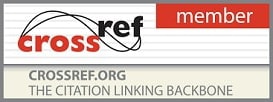Vol. 9, Issue 1, Part A (2025)
Occurrence of natural enemies in Bt and non-Bt cotton and their correlation with abiotic factors
Uttam Kumar Behera, Pravasini Behera, Manoj Kumar Rout, Chitta Ranjan Satapathy, Niranjan Mandi and Bhabani Shankar Nayak
The field study assessed the occurrence of natural enemies in the western undulating zone of Odisha, conducted at the Regional Research and Technology Transfer Station in Bhawanipatna, during the Kharif seasons of 2016 and 2017. The study examined the population dynamics of key natural enemies in Bt and non-Bt cotton, including six species of ladybird beetles, green lacewings (Chrysoperla carnea), syrphids (Ischiodon scutellaris), the predatory pentatomid bug (Eocanthecona furcellata), the parasitoid Apanteles syleptae, and five species of spiders. Ladybird beetle populations ranged from 0.10 to 1.78 per plant in Bt cotton and 0.18 to 1.82 in non-Bt cotton, with peak populations occurring during the 36th SMW and a strong positive correlation with temperature and rainfall. Chrysoperla carnea egg counts ranged from 0.00 to 0.40 per plant in Bt cotton and 0.02 to 0.44 in non-Bt cotton, peaking during the 37th –39th SMW. Syrphid populations peaked at 0.56 per plant in non-Bt cotton, correlating positively with rainfall and humidity. Eocanthecona furcellata exhibited minimal populations (0.12 to 0.24), with peaks in October, while Apanteles syleptae was significantly more abundant in non-Bt cotton (0.04-0.62). Spider populations, predominantly generalist predators, peaked at 1.42 per plant in Bt cotton during the 41st SMW and 1.38 per plant in non-Bt cotton during the 42nd SMW. However, spider population correlations with weather parameters were inconsistent.
Pages: 39-45 | 746 Views 103 Downloads






